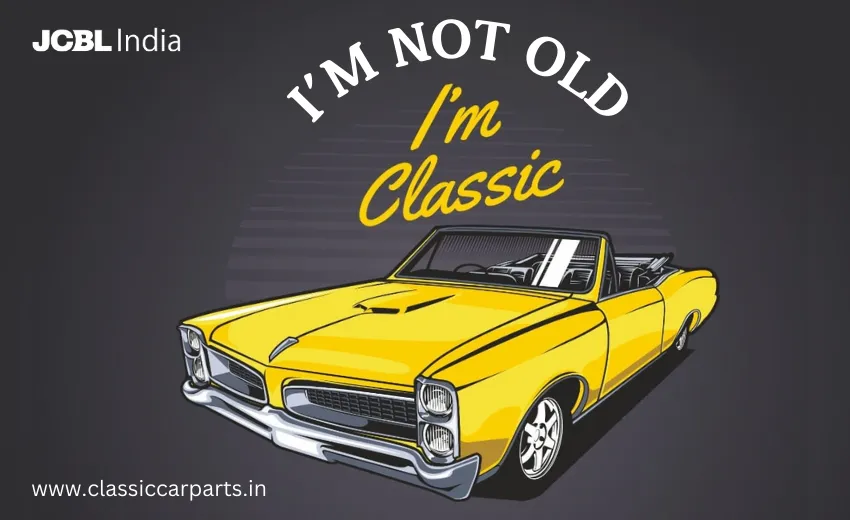Restoring a classic car is a labor of love, a journey that requires attention to detail, patience, and a deep appreciation for automotive history. Whether you’re breathing new life into a vintage Mustang, a timeless VW Beetle, or a rugged Chevy pickup, the process often involves more than just a fresh coat of paint and some polish. Some of the most critical aspects of restoration involve replacing essential parts that have deteriorated over time. Here’s a rundown of the key components you’ll likely need to replace when restoring a classic car:
Bonus Material: Why Classic Car Prices Are Always High?
Essential Parts You Need to Replace When Restoring a Classic Car
Restoring a classic car requires attention to detail, especially when replacing essential parts. Ensuring these components are in top condition, from engine parts to electrical systems, is crucial for a successful restoration project. In this guide, we’ll explore the important parts that need to be changed when restoring a classic car.
1. Engine Components:
The heart of any vehicle, the engine, deserves special attention during restoration. Depending on the condition of the original powerplant, you may need to replace worn-out pistons, rings, bearings, gaskets, or even the entire engine block of your classic car. Rebuilding or replacing components ensures optimal performance and reliability for years to come.
2. Suspension and Steering Parts:
Over the years, suspension components such as bushings, ball joints, tie rods, and shock absorbers can wear out, leading to a compromised ride and handling. Restoring a classic car often involves replacing these parts with new or refurbished ones to achieve that factory-fresh feel on the road.
3. Brake System:
Safety should always be a top priority when restoring a classic car, and that means ensuring the brake system is in top-notch condition. Replace worn brake pads, rotors, drums, calipers, hoses, and master cylinders to guarantee reliable stopping power and peace of mind on the road.
4. Electrical System:
Wiring harnesses, switches, relays, and bulbs can deteriorate over time, leading to electrical gremlins that can be frustrating to diagnose and repair. Replace these components with modern equivalents or meticulously restore them to ensure trouble-free operation of lights, gauges, and other electrical systems.
5. Interior Trim and Upholstery:
The interior of a classic car is where you’ll spend most of your time, so it’s essential to replace worn-out trim pieces, door panels, carpets, and upholstery. Whether you opt for an authentic restoration or choose to customize the interior to your tastes, refreshing these components will enhance comfort and aesthetics.
Bonus Material: Expert Tips for Classic Car Restoration
6. Body Panels and Trim:
Rust and corrosion are common enemies of classic cars, especially those exposed to the elements for decades. Replace rusted or damaged body panels, trim pieces, and chrome accents with new or refurbished parts to restore the car’s original beauty and curb appeal.
7. Cooling System:
Preventing overheating is crucial for preserving the health of your classic car’s engine. Replace worn-out radiators, hoses, thermostats, and water pumps to ensure efficient cooling, especially if you plan to take your restored vehicle on long drives or in hot climates.
8. Exhaust System:
A rumbling exhaust note is music to the ears of any car enthusiast, but a leaky or rusted exhaust system can detract from the driving experience. Replace corroded mufflers, pipes, and catalytic converters to restore performance and maintain that iconic exhaust sound.
9. Fuel System:
Old fuel tanks, lines, filters, and carburetors can cause various issues, from poor engine performance to fuel leaks and fire hazards. Replace these components with new or refurbished parts to ensure reliable fuel delivery and optimal engine operation.
10. Rubber Seals and Gaskets:
Over time, seals, gaskets, and rubber parts of classic cars can dry out, crack, and fail, leading to leaks and water intrusion. Replace these critical components throughout the car, including doors, windows, and engine compartments, to prevent costly damage and maintain a dry, comfortable interior.
Restoring a classic car is a rewarding endeavor that requires careful planning, attention to detail, and a willingness to tackle challenges head-on. By replacing these essential parts during the restoration process, you’ll not only preserve the heritage and authenticity of your classic car but also ensure that it remains a joy to drive for years to come.

